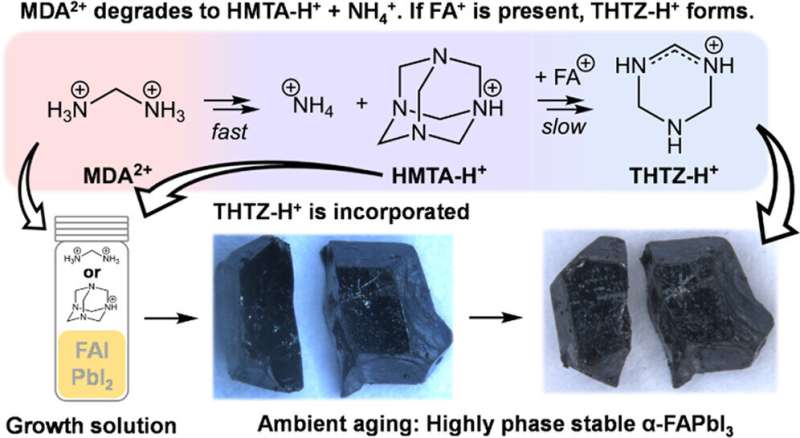This article has been reviewed according to Science X's editorial process and policies. Editors have highlighted the following attributes while ensuring the content's credibility:
fact-checked
peer-reviewed publication
trusted source
proofread
Researchers explain the performance of the most efficient and stable solar cells

Juan Luis Delgado, Ikerbasque researcher at POLYMAT and the University of the Basque Country (UPV/EHU) in collaboration with researchers from the University of Oxford (U.K.), has published an article in the Journal of the American Chemical Society that explains the functioning of perovskite solar cells with top-level efficiency and improved stability.
Perovskite solar cells could be the alternative to those of crystalline silicon currently on the market as they have advantages over conventional silicon panels, such as higher efficiency (efficiencies above 25%) and lower cost. Perovskite cells are manufactured by "solution processing," which is cheaper and less polluting than silicon purification. Their main drawback when it comes to commercialization is their stability, and it is in this area that scientific research, such as that which has been published in JACS, is currently focused.
A team of Oxford University researchers led by Henry Snaith (University of Oxford, UK) and Juan Luis Delgado (Ikerbasque, POLYMAT and UPV/EHU, Spain) have joined forces to provide insights into the use of state-of-the-art additives to obtain highly efficient and stable solar cells.
In 2019–2022 several research groups described the incorporation of a small amount of additive (methylenediammonium dichloride) to achieve the highest efficiency certified so far for perovskite solar cells (25.7% PCE). In this work, the role of the additive during perovskite crystal growth has been studied and it has been found that this additive decomposes over time to more stable chemical forms conferring improved perovskite stability (>1 year exposed to air).
These results are extremely important and will have direct implications for the future development of stable, high-efficiency perovskite photovoltaic devices.
More information: Elisabeth A. Duijnstee et al, Understanding the Degradation of Methylenediammonium and Its Role in Phase-Stabilizing Formamidinium Lead Triiodide, Journal of the American Chemical Society (2023). DOI: 10.1021/jacs.3c01531
Journal information: Journal of the American Chemical Society
Provided by University of the Basque Country



















